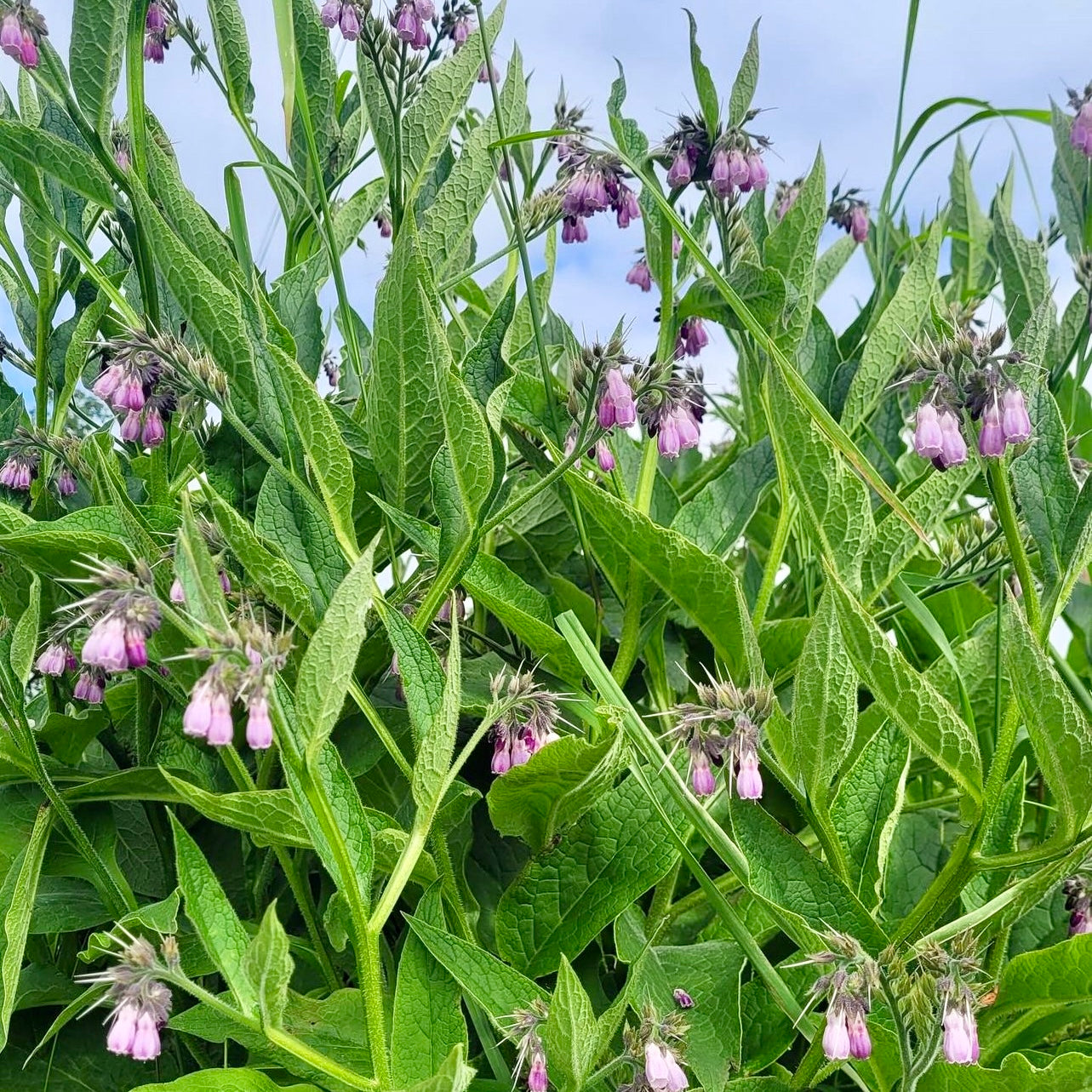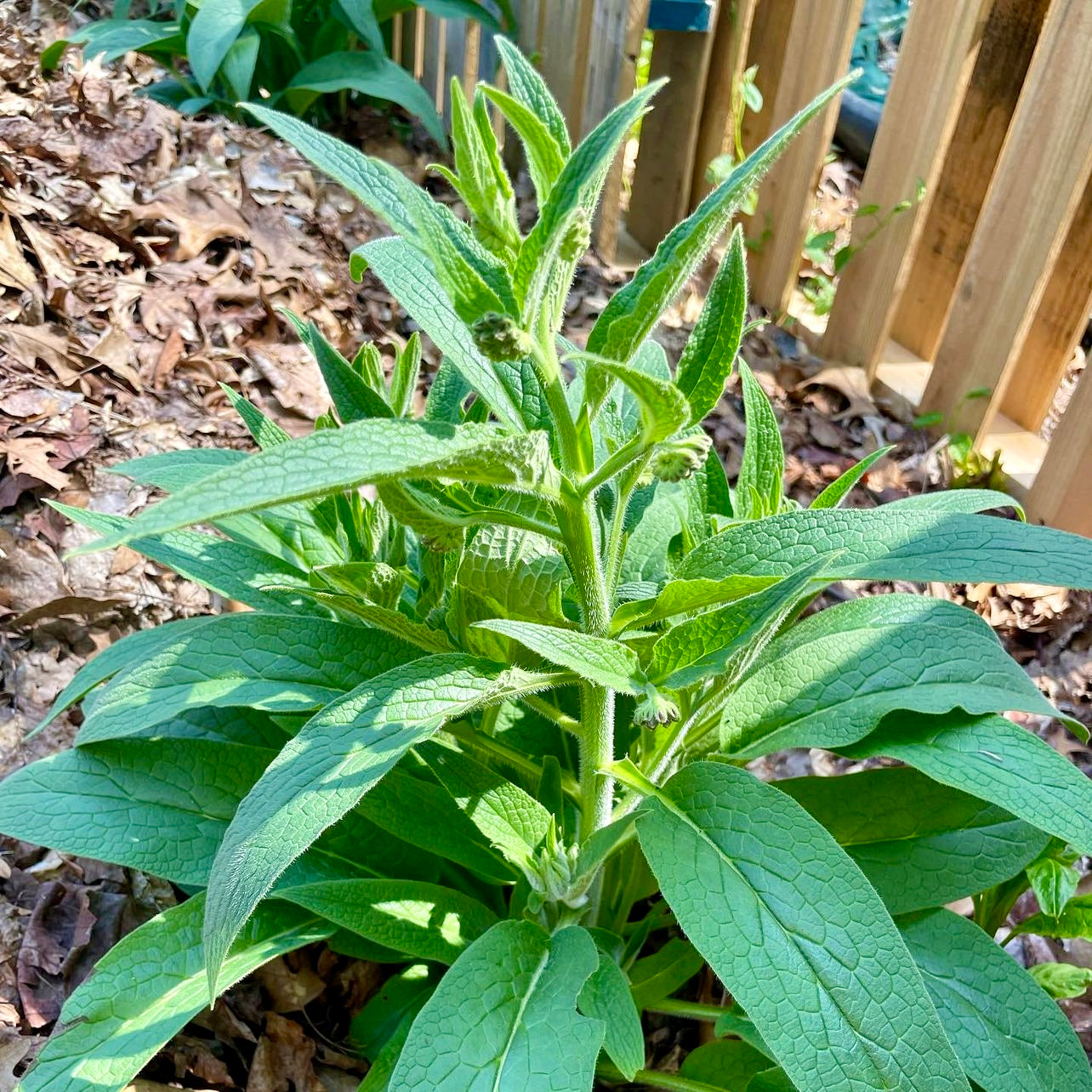Comfrey (Symphytum officinale)
Comfrey (Symphytum officinale)
Couldn't load pickup availability
Why We Grow It
Why We Grow It
Comfrey is an indispensable component for anyone trying to boost their onsite fertility due to its versatility and soil-building properties. As a dynamic accumulator, it enriches the soil with essential nutrients, by utilizing trace minerals in the soil and concentrating them into a bioavailable form at the soil surface. Its role as a chop-and-drop mulch plant reduces the need for external inputs while providing an ongoing source of organic matter. Comfrey also creates habitat and nectar for pollinators, enhancing biodiversity. With minimal maintenance requirements and numerous ecological benefits, Comfrey is a powerhouse plant.
How the Plant Grows
How the Plant Grows
Comfrey grows vigorously from a central crown, producing large, coarse leaves and clusters of bell-shaped flowers in shades of purple, pink, or white. It is a perennial that thrives in a variety of climates and soils, regrowing year after year even after repeated harvesting. Its robust root system anchors it firmly in the soil, helping prevent erosion and improving soil structure. In spring and summer, the plant's rapid growth provides abundant biomass for chop-and-drop mulching or composting.
Plant Size
Plant Size
Size at Maturity- Herbaceous Layer. Reaches 2-3 feet tall and wide.
Current Size- Root cuttings 3"-6" long
Additional Info
Additional Info
Comfrey has been used for centuries in traditional medicine to aid in wound healing and as a tonic for various ailments, giving it the nickname "knitbone." In modern permaculture, it is celebrated for its ecological role. Its deep taproots draw up essential minerals like potassium, phosphorus, and calcium, which are then made available to other plants through its decomposing leaves. Comfrey leaves are excellent for composting or creating nutrient-rich compost teas. The plant’s abundant flowers attract pollinators, making it a valuable addition to any ecological design. Cultivars like Bocking 14 are sterile, preventing unwanted spreading, while still offering all the benefits of traditional comfrey.
Comfrey is a fast-growing perennial herbaceous plant prized for its ability to improve soil health and its usefulness in permaculture systems. Known as a dynamic mineral accumulator, Comfrey mines nutrients from deep within the soil and brings them to the surface, enriching the surrounding environment. Its lush foliage makes it an ideal chop-and-drop mulch plant, providing a steady supply of organic matter to build and maintain healthy soil.
We dug these up at a friends house and are unsure of the variety. It doesn't appear to spread from seed. To establish simply plant the root cuttings horizontally an inch below the soil and mulch. Keep free of weeds and keep the area moist.
Share


Plant Highlights
-

Water
Moderate water needs; prefers consistent moisture but tolerates occasional drought.
-

Pollination
Pollinated by bees and other insects; produces nectar-rich flowers
-

Soil
Thrives in well-drained, fertile soils but is highly adaptable, tolerating clay, loamy, or sandy soils
-

Years to Bear
You can begin harvesting leaves and roots after year 1. Divide the roots and make new patches.
-

Hardiness
Zones 3-9, tolerating temperatures as low as -40°C (-40°F)
-

Solar
Prefers full sun but tolerates partial shade.
Subscribe to our emails
Lots of Free Growing Info. Be the first to know about new plants and exclusive discounts.








